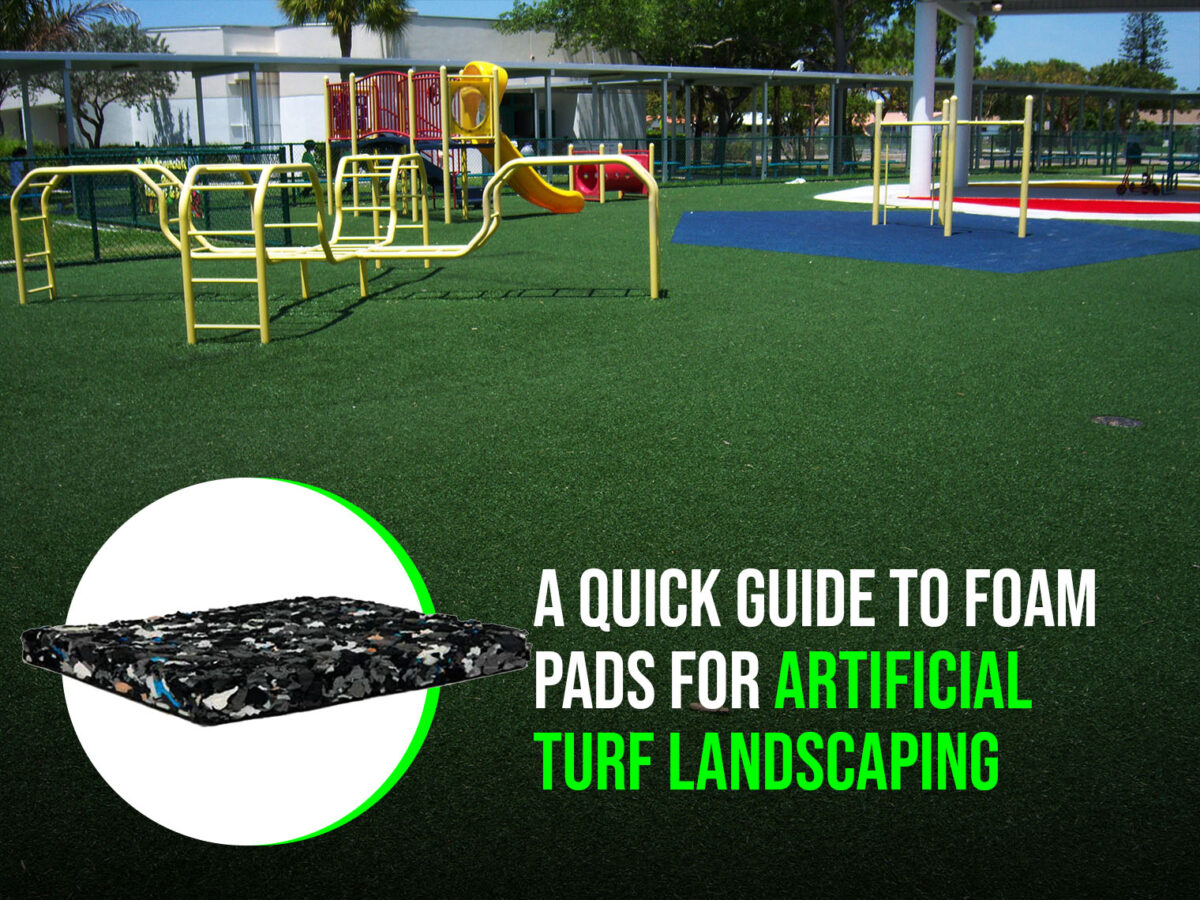- BACKYARD
- COMMERCIAL
- ENVIRONMENT
- FIELD TURF NEWS
- GOLF
- MAINTENANCE
- NEWS
- PETS
- POOL
- RESIDENTIAL
- TURF TIPS
Get the Facts on Foam Padding for Artificial Turf Landscaping

If you’re thinking of investing in artificial turf landscaping, especially in an area where kids will play, you may want to look into adding a foam padding underneath for extra safety and comfort. Is foam padding right for your project? Here’s what you need to consider:
What Are Foam Pads for Artificial Grass?
Foam pads for artificial turf are made from closed-cell polyethylene foam or polyurethane foam. It gets installed underneath the artificial grass itself. The pads add some “give” to the synthetic turf, enhancing the natural grass-like feel. When you walk, run, or play on turf with foam padding, you get a soft, slightly springy sensation underfoot that makes the surface more forgiving.
High-quality foam pads have small holes throughout the material to allow drainage so water doesn’t pool. Tiny perforations can be present or horizontal slits/channels. Some pads feature vertical airflow channels on the bottom side to prevent moisture buildup underneath.
Why Add a Foam Pad Under Artificial Grass?
While foam pads are optional, they offer some great benefits that make them worth considering.
Enhanced Safety & Injury Prevention
The additional cushioning provided by the shock pad helps absorb impact from falls, reducing the risk of injuries. Kids can take tumbles and land on a forgiving surface rather than something hard. This is especially useful in playgrounds, recreational areas, and landscapes where children will play and roughhouse. The foam helps prevent minor bumps and scrapes that can happen during play.
Better Comfort & Feel
Along with safety, foam pads greatly improve how the artificial turf feels underfoot, making it more comfortable to walk, play, exercise, and lay on. The extra cushioning makes it more natural and grass-like, without that hard “fake grass” sensation. It’s a lot nicer to kick off your shoes and walk barefoot on padded turf. The foam provides a little “give” with each step, reducing fatigue compared to solid surfaces.
Noise Reduction
An added perk is that foam pads can noticeably reduce noise from footsteps and activity on the turf. The foam dampens contact noise and absorbs vibration. This helps keep things quieter for nearby homes. Less stomping noise makes for happier neighbors.
Extends the Life of Turf
The foam pad adds an extra layer of protection underneath the turf backing to help prevent premature wear and tear. By cushioning the contact points, the pad reduces friction that can degrade the blades and backing over time. Properly installed, shock pads can extend the usable lifespan of the grass.
Levels Out Minor Imperfections
Small dips, bumps, rocks, and inconsistencies in the base get smoothed out by the foam layer underneath. This allows for a flatter, more even installation over mildly irregular surfaces. The foam compensates for inconsistencies up to around 1/2″ in height.
Helps with Drainage
Since most foam pads have perforations throughout the material, they don’t retain water and allow it to drain through. This improves drainage compared to installing turf directly on a solid surface like concrete where water can pool on top.
What Types of Installations Benefit from a Foam Pad?
Foam pads are great for:
- Playgrounds – Provides critical fall safety for kids playing and prevents scraped knees. Allows safe play over hard surfaces.
- Recreational Spaces – Cushions sports fields, batting cages, and golf practice areas. Absorbs impact from balls, equipment, and players. Reduces injuries and fatigue.
- High Foot Traffic Zones – Prolongs life of turf in busy areas like events spaces, trade show floors or commercial landscapes. Withstands frequent use without flattening.
- Noise Sensitive Locations – Helps reduce noise from activity that may bother nearby homes, businesses, hospitals, etc.
Foam pads generally aren’t necessary for decorative lawns or landscapes that won’t get heavy recreational use. They also aren’t ideal for putting greens or areas where you want maximum ball roll.
Get the FieldTurf Advantage
Not sure if you need foam pads for your artificial grass installation? Our FieldTurf Landscape experts can help you decide whether they’re the right choice for your project. And if they are, we can also recommend the right type and thickness of shock pad for your unique needs and landscape goals.
For answers to your specific foam pad questions – or to get a free estimate on artificial grass with professional padding included – contact FieldTurf Landscape today.


